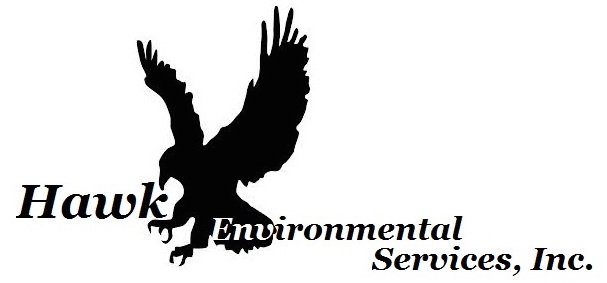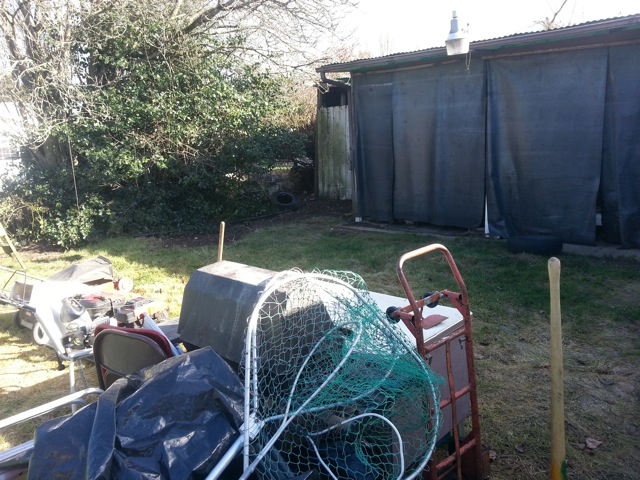At Hawk Environmental Services, we often get asked to create a testing and sampling plan for unusual situations. In the information below, you can see the way we designed a cost effective petroleum sampling plan for a client that needed to be sure that a bigger problem with spilled oil or gasoline wasn’t being hidden.
Our other “specialty testing” services
Soil Testing Goals:
The client is purchasing the home and during the appraisal, containers of oil and gasoline were observed in the back yard near the shed which has been used for motorcycle repairs. The appraiser has requested soil testing in this area to meet FHA requirements.
Property description:
The subject property is a small residential home with a back-yard that is partially covered in concrete slab, partially covered by grass, has 2 storage structures, and bare soil near the rear shed. At the time of inspection the back yard had a large empty dumpster on a portion of concrete slab, and various lawn maintenance devices and small motorcycles were observed. No oil or gasoline containers were present in the yard during the inspection.
Soil Testing Plan:
As no known contamination was known, and the site is a standard residential property (unrestricted use) the following testing plan was employed to provide a general assessment as to the likelihood of soil contamination near the shed based on spilled gasoline or oil:
- The entire back yard was visually assessed to determine the area with the highest likelihood of contamination
- The area near the back storage shed was chosen for sampling and the bare soil was measured and documented on the attached floor-plan.
- The area of bare soil (90 square feet) was divided into a 4 x 4 grid
- One sample of soil from each section of the grid (including soil from the surface to a depth of 2”) was gathered.
- All 16 soil samples (one per grid section) were mixed together into a clean glass container.
- The compounded soil samples were delivered to a certified lab and sent for TPH-HCID (hydrocarbon identification).
- The results of the lab testing were compared against soil cleanup levels for unrestricted use sites as per WAC 173-340-900 table 740-1.
Petroleum Sample Results:
(additional lab information can be found in the emailed .pdf document)
Hydrocarbon | Sample Results | Cleanup Level | Pass/Fail |
Gasoline | <20 mg/kg | 100 mg/kg (or 30 mg/kg for atypical mixtures) | Pass |
Diesel | <25 mg/kg | 2,000 mg/kg | Pass |
Heavy Oil | 120 mg/kg | 2,000 mg/kg | Pass |
Evaluation of soil testing analysis:
- All hydrocarbons measured in the TPH-HCID analysis fell below the cleanup levels listed above. The top 2” of soil in the tested area should not be considered contaminated by gasoline, diesel, or heavy oils. Unless additional information in regards to other known contamination is provided, not further action is recommended.
Comments are closed.


